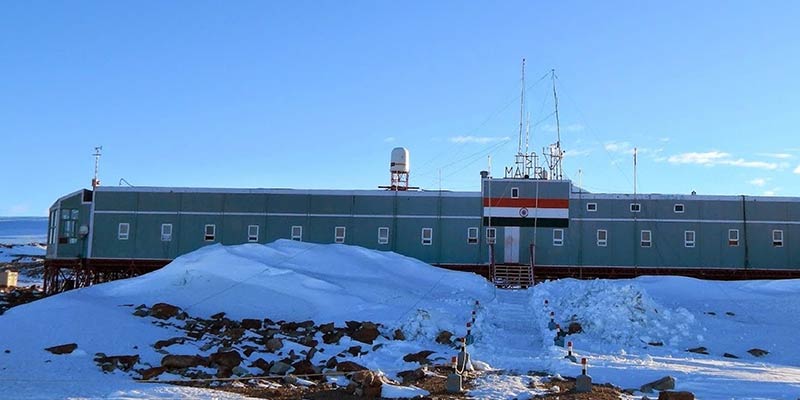- India
- Apr 09
India opens its third post office in Antarctica
• India Post opened its third post office in Antarctica. The new post office was inaugurated at Bharati Station.
• The inauguration coincided with the 24th Foundation Day of the National Centre for Polar and Ocean Research (NCPOR), Goa.
• The first post office was established in 1984 at Dakshin Gangotri, followed by another in 1990 at Maitri Station.
• The launch of the Bharati Branch Post Office represents a significant advancement in bridging geographical barriers and facilitating communication and connectivity in Antarctica, furthering the mission of scientific exploration.
India and Antarctica
• The Antarctic Treaty was signed on December 1, 1959 by 12 countries. It came into force on June 23, 1961, after its ratification. The Treaty’s objectives are to demilitarise Antarctica, establish it as a zone for peaceful research activities and set aside any disputes regarding territorial sovereignty, thereby ensuring international cooperation. The total number of Parties to the Treaty is now 54.
• India signed the Antarctic Treaty on August 19, 1983. India is one of the 29 Consultative Parties to the Antarctic Treaty.
• The Convention on the Conservation of Antarctic Marine Living Resources (CCAMLR) was signed in Canberra on May 20, 1980 to protect and preserve the Antarctic environment and, particularly, for the preservation and conservation of marine living resources in Antarctica.
• India ratified the CCAMLR on June 17, 1985.
• The Protocol on the Environmental Protection to the Antarctic Treaty (Madrid Protocol) was signed at Madrid on October 4, 1991, to strengthen the Antarctic Treaty system and for the development of a comprehensive regime for the protection of the Antarctic environment and dependent and associated ecosystems.
• India ratified the Madrid Protocol on January 14, 1998.
• India is also a member of the Council of Managers of National Antarctic Programme (COMNAP) and Scientific Committee of Antarctica Research (SCAR), which shows the significant position that India holds among the nations involved in Antarctic research.
• With an active research station Maitri in Schirmacher Oasis and a second station Bharati at Larsemann Hills, including Himadri station in the Arctic, India now belongs to the elite group of nations with multiple research stations within the Polar Regions.
Research base stations in Antarctica
• Since 1981, India has completed 40 scientific expeditions and built three permanent research base stations in Antarctica — Dakshin Gangotri (1983), Maitri (1988) and Bharati (2012).
• Dakshin Gangotri was established in 1983 over the Ice Shelf in the Central Dronning Maud Land region. The station was abandoned in 1990 as it got buried under snow.
• Currently, Maitri and Bharati are fully operational.
• Maitri has been operational since 1989 in the central part of Schirmacher Oasis, in Central Dronning Maudland region of East Antarctica. The Maitri station is functional round the year. It serves as a gateway to one of the largest mountain chains in central Dronning Maud land, located south of Schirmacher. It is an inland station about 100 km from the shore at an elevation of about 50 meters above sea level. It can support 25 persons in the main building during summer as well as winter and about 40 in the summer facility consisting of containerised living modules.
• Bharati is located between Thala Fjord & Quilty bay, east of Stornes Peninsula in Antarctica. The station was commissioned on March 18, 2012 to facilitate year-round scientific research activity by the Indian Antarctic programme.
Manorama Yearbook app is now available on Google Play Store and iOS App Store


